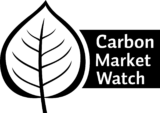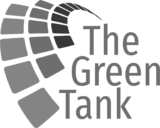Explained: MEP Peter Liese’s proposals for the EU carbon market
In January 2022, MEP Peter Liese, the European Parliament’s rapporteur on the proposed revision of the EU’s Emissions’s Trading System, published his draft report in which he suggests several changes to the European Commission’s EU ETS proposal, which was released in July of 2021. This explainer analyses Liese’s proposals and recommends key adjustments to them.

Suggested changes

Climate ambition
The draft report does not include any changes to the key parameters that would increase the climate ambition of the EU ETS compared to the European Commission’s proposal.
A target of 70% emissions reductions for current ETS sectors (compared to 2005) is more in line with the urgency of the climate crisis. To achieve this target, the ETS revision should implement a one-off reduction of the cap of 450 million allowances in addition to the already proposed increase in the annual linear reduction rate (Linear Reduction Factor) (to 4.2%).
The Market Stability Reserve should also be strengthened through the followings:
- 36% intake rate
- Cancellation of allowances held in the reserve for more than three years
- Dynamic thresholds declining to zero by 2030

Industrial emissions and carbon leakage protection
The draft report includes key changes on rules concerning energy-intensive industries and carbon leakage protection measures. In particular three changes are suggested:
- Bonus-malus system: This system would reshape the way free allowances are allocated to energy-intensive industries. Best performers would receive 10% additional free allowances, while worst performers would see their allowances reduced by 25% if they do not have a climate neutrality plan that outlines how they will become climate neutral by 2050
- Carbon Leakage Protection Reserve: A reserve where free allowances phased out in sectors covered by the Carbon Border Adjustment Mechanism (CBAM) would be temporarily placed while the effectiveness of CBAM is assessed. If CBAM were to be deemed ineffective against carbon leakage, allowances would be released from the reserve and given back to industry for free. If successful, allowances in the reserve would be auctioned and the revenues pumped into the Innovation Fund.
- Millions of allowances would be made available for free to industrial sectors to avoid the cross-sectoral correction factor (a factor that is triggered to maintain the ratio between auctioned and free allowances in check). Namely, 57 million allowances from the maritime sector, 12 million allowances from aviation and a share of allowances from the Market Stability Reserve.
The Bonus-malus system should be strengthened to provide real incentives for industrial sectors to decarbonise:
- A clear and early end date for free allowances
- Worst performers should be stripped of all their free allowances
- Companies must provide more realistic and better detailed climate-neutrality plans, including on their governance and enforcement
- No bonus in the form of free allowances should be given to installations that are only marginally better than the 10% best
- Revision of climate neutrality plans should occur every year (not every five years)
The Carbon Leakage Protection Reserve must not be put in place as it directly undermines the CBAM, both domestically and internationally, and unduly complicates its implementation. Moreover, how the effectiveness of the CBAM in avoiding carbon leakage would be measured is not specified and could open the door to more free allowances to industrial sectors.
Remove all Liese’s changes to the Commission’s proposal that have the sole purpose of redirecting allowances to increase free allocations to heavy industry should be removed.

Maritime
MEP Liese’s draft report builds strongly upon the European Commission’s proposal with regards to pricing climate pollution from shipping, but adds some elements from the European Parliament’s 2020 position from the EU MRV Regulation legislative process where the parliament’s plenary already voted on whether and how to include shipping in the EU ETS. Major changes include establishing an Ocean Fund to recycle EU ETS revenues into the shipping sector, covering methane emissions from the start and further clarifying how to share or determine responsibility for EU ETS compliance.
However, the main shortcomings of the European Commission proposal are not rectified: MEP Liese would maintain a) the phase in for the sector (though shortened by a year to four years) and b) only 50% coverage of international shipping.
The shipping sector should be brought into the EU ETS completely and without delays. Shipping companies should be required to surrender allowances equal to 100% of their verified emissions as of 2023. And all incoming and outgoing voyages should be fully covered, and exemptions for ship types and sizes should be minimised. All vessels above 400 gross tonnage should be covered, including luxury yachts and offshore maintenance and servicing ships. In addition, the EU ETS coverage of this sector should not be weakened in favour of waiting for the notoriously slow and unambitious International Maritime Organisation to get its member states to agree on stringent climate action. The EU can and must show leadership in this sector, and could even pursue bilateral deals to share responsibility for emissions from ships between the EU and third countries by ensuring each jurisdiction prices 50% of those emissions.
MEP Liese’s proposal for expanding coverage to methane is welcome. However, the inclusion of other greenhouse gases and black carbon should be speeded up. The proposal for an Ocean Fund is also a step in the right direction. However, it should only focus on real climate solutions, and not so-called low-carbon fuels, as this could be understood to include fossil gas – a climate polluting fuel that hinders progress to a zero-emissions shipping sector.

Innovation Fund
MEP Liese’s draft report builds even further on the Commission’s proposal to expand the capacity and scope of the Innovation Fund. This is done by redirecting several resources to the Fund:
- 1.25% of additional allowances otherwise earmarked for the Modernisation Fund
- Allowances from the Carbon Leakage Protection Reserve when CBAM is deemed effective
- Over 280 million allowances from auctions
The draft report expands the scope of the Innovation Fund to include collective transport (minimum 10% of the fund’s resources), innovation in the aviation sector (both on fuels and infrastructure) and agriculture. It very clearly excludes any funding for nuclear energy.
The draft report also suggests bringing the Innovation Fund, together with other ETS funds – such as the Ocean Fund, Modernisation Fund and Social Climate Fund – into the EU budget, which would mean different rules for disbursing the money and stricter oversight.
Increasing the resources for the Innovation Fund is needed to help industrial sectors decarbonise. However, this should not be done by reducing resources for the Modernisation Fund. If, instead of creating a Carbon Leakage Protection Reserve, all ETS revenues generated through the CBAM were channelled to the Innovation Fund, there would be sufficient revenue to increase the capacity of the Innovation Fund and enlarge the Modernisation Fund, as the European Commission has proposed.
MEP Liese’s ideas to expand the scope of the Innovation Fund are good, especially for sectors such as aviation, railways, and public transport. Moreover, the exclusion of nuclear power is particularly welcome.
The idea of bringing the Innovation Fund into the EU budget would increase oversight over projects receiving funding. However, it would also require unanimity and multi-annual planning, which could slow down the process at a time when fast decarbonisation and breakthrough technologies are urgently needed.

Modernisation Fund
The draft report makes several changes to the Modernisation Fund. It removes the possibility of funding non-priority projects by assigning 100% of funding to priority ones, which is an improvement on the Commission’s proposal that required only 80%.
It also supports the exclusion of funding for fossil fuels and adds the exclusion of nuclear energy as well.
In the draft report, the additional amount of allowances allocated to the Modernisation Fund is halved (from 2.5% to 1.25%). The other half is allocated to the Innovation Fund.
While most of the changes to the scope of the Modernisation Fund proposed by MEP Liese go in the right direction, it is important to revert to the Commission’s proposal to enlarge the fund’s budget by 2.5% of additional allowances. The resources of the Modernisation Fund need to be increased.

Carbon removals and carbon utilisation
MEP Liese continues and expands the European Commission’s mistakes with regard to including carbon capture and utilisation (CCU) in the EU ETS. The draft report would not only allow for carbon temporarily stored in products to be falsely labelled as permanent storage, but it would also add a complex process for determining the exchange rate between the length and the value of the storage. To cool the climate, any storage on timescales shorter than several centuries is practically pointless.
However, MEP Liese’s addition that emissions related to the capture and utilisation process should be accounted for is a step in the right direction, but does not go far enough.
The draft report also expands the EU ETS to include removal offsetting. Offsetting is a zero-sum game that does not help tackle the climate crisis – and we do not have the luxury of time to waste on it. MEP Liese proposes that any direct air or bio-energy capture and storage facility would earn pollution allowances depending on how much carbon they store. This ignores the significant sustainability issues related to bio-energy and even encourages the burning of more of it. It would also inflate the cap and worsen the current oversupply in the EU ETS. Finally, it would undermine the functioning of the EU ETS as an emissions reduction policy by reducing incentives to decarbonise EU ETS installations, while not making direct air capture economically attractive.
Carbon must not only be captured, but also permanently stored before it stops worsening the climate crisis. Therefore, exempting CCU from EU ETS compliance is only acceptable if the captured carbon used to make a product does not re-enter the atmosphere for the coming few centuries, neither during the use nor the disposal of that product (otherwise plastic bottles, for instance, could be defined as permanent stores of carbon). Emissions throughout the value chain of the CCU product need to be calculated so that only products that really decrease overall carbon emissions are incentivised.
Carbon removals should not be directly brought into the EU ETS as they would then slow down the transition to climate neutrality. Rather, they could be incentivised through direct financing by the Innovation Fund.

Road transport and buildings
The draft report proposes the extension of the proposed Emissions Trading System for buildings and road transport to all fuels. Moreover, the introduction of the new system is moved from 2026 to 2025, with a temporary opt-out clause until 2027 for fuels for private road transport and heating of residential buildings. It also adds a (new) temporary opt-out clause giving member states the possibility to delay the application of emissions trading for fuels released for private road transport and private residential building heating until 2027.
While the Commission’s proposal was based on the existing ETS design, excluding free allocation and indirect cost compensation, the draft report risks opening up an unhelpful and disruptive discussion on carbon leakage protection measures in even more sectors, such as process heating in installations not yet covered by the EU ETS.
If a new ETS for all fuels is to be created, indirect cost compensation and the introduction of carbon leakage protection measures should not be included. The risk of carbon leakage in the sectors concerned (small non-ETS industries, fossil fuel use in agriculture and forestry and off-road machinery, non-electric railway, and the military sector) is limited or non-existent and, therefore, does not warrant the introduction of such carbon leakage protection measures.
Fuel suppliers should be required to absorb part of the EU’s forthcoming carbon levy for buildings and road transport instead of passing the burden entirely onto consumers. The amount that fuel suppliers can pass on to consumers should be limited. Anything above that limit would be covered by the suppliers, in the form of a penalty paid to the Social Climate Fund (SCF), designed to support vulnerable households who might not otherwise be able to move their transport and heating consumption away from fossil fuels.

Aviation
The draft report does not include many changes to the aviation sector. Nevertheless, it does address some key elements:
- It proposes to shift the phase out of free allowances to 2026 instead of 2027. By accelerating the phase out, the rapporteur proposes to channel the resulting additional 12 million allowances towards the avoidance of the Cross-Sectoral Correction Factor.
- To reduce greenhouse gas emissions in the aviation sector, it proposes to redirect a significant portion of the Innovation Fund to projects related to the development and implementation of new technologies and designs (sustainable aviation fuels and operational, aeronautics, airframe and engine innovation).
The phase out of free allocation should be more rapid than proposed, resulting in the full auctioning of allowances from 2024, when t he regulation enters into force, rather than from 2026. In addition to proper implementation of the polluter pays principle, this would raise significant revenue, especially when the phase out is combined with full-scope coverage of the EU ETS.
All clauses redirecting allowances to increase free allocations with the only purpose of avoiding the Cross-Sectoral Correction Factor should be removed.
The expansion of the scope of the Innovation Fund is good and it could help the aviation sector to reduce greenhouse gas emissions. Therefore, it is necessary to maintain the inclusion of aviation in the Innovation Fund in the final law.










